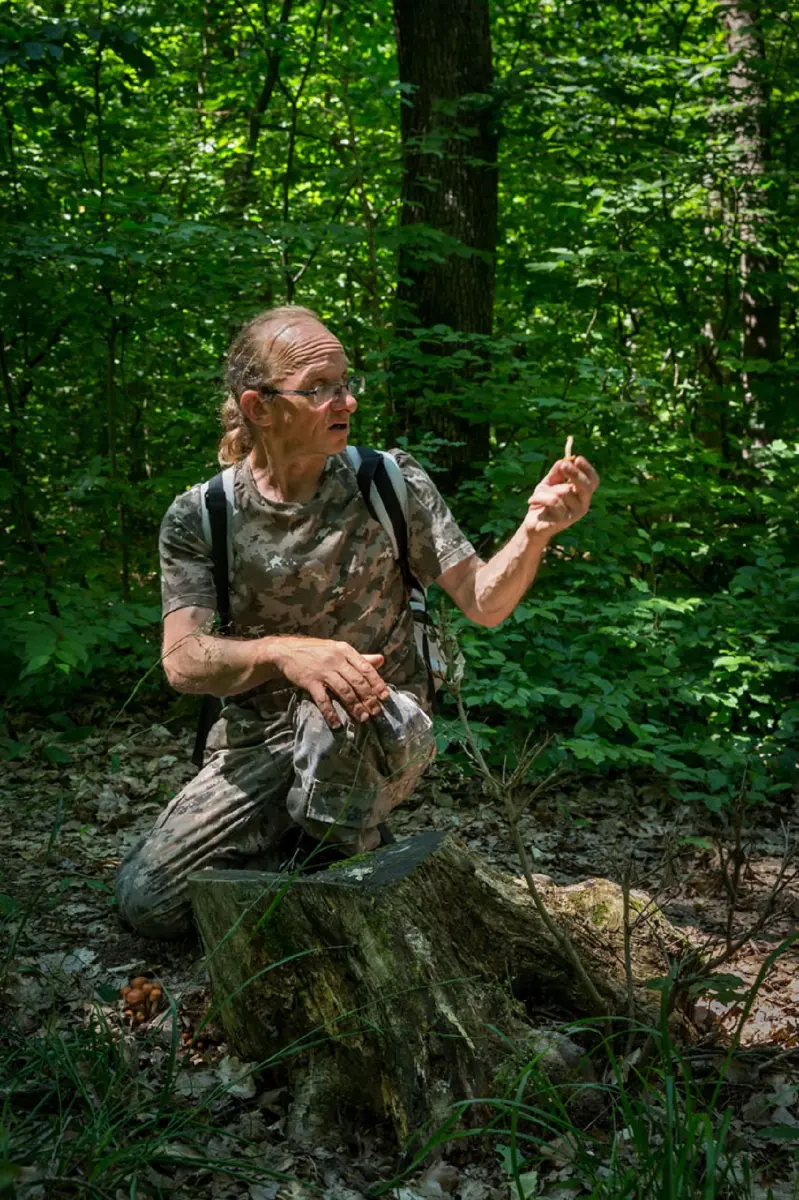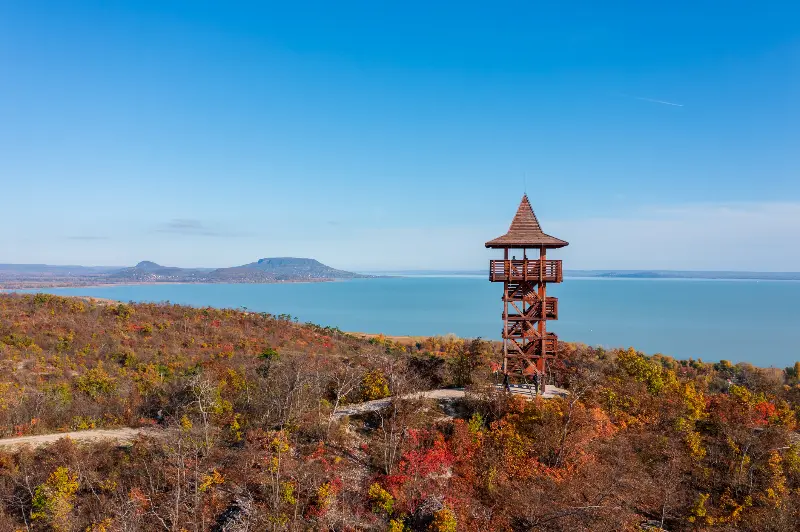
Helyszín címkék:
In search of mountain minerals with “Telkimanó” from Zemplén
Méhész Zsuzsa
In Telkibánya, József Bartók is known only as the ‘Telkimanó’ (Telki elf). And he knows the forest, the hidden corners of the Zemplén, and if we want, he can let us in on his secrets. The visit was made in search of mountain minerals and gold ore in Northern Hungary.

Elf in the forest
When we meet elves, we can secretly expect a surprise, even a miracle. At the first moment of meeting him, one could imagine that Telkimanó had jumped out of an old oak tree, or, if he was not guiding tourists along the Zemplén paths, he was sitting up in the foliage talking to the birds. We are close to the truth, because József Bartók also knows the last grasses, mushrooms, animals, mines and bats of the Zemplén, and he is happy to share his knowledge with others. No need to prove his elf-like character, in his green clothes he is agile and at home in the wild and the fields. He got the prefix Telki from Telkibánya, where he lives and where you can join the tours he leads.
We set off to collect minerals, but by the time we get to the site, we have already tested the echo, understood the relationship between the root and the leaf, learned the names of some of the mushrooms we come across and what they are for. As well as herbs or edible berries from the forest. Not in a scholastic way, but with pleasure: after a while, we find ourselves picking our feet up after the little person, listening to every word. Telkimanó speaks softly, as if he does not want to disturb the peace of the forest, his words have weight, although he embeds them in light humour. Everyone in the group, from young children to the elderly, enjoys listening, as if condensing centuries of wisdom into a few hours of walking in the woods.

Crystal mountain and gold mine
When I get to the countryside, all I see are the trees, but they are beautiful, too; the Zemplén has magic in every season. How does this become mineral collecting? I’m sure the lucky ones will find something interesting, but I find it hard to believe that I will succeed here. Then from the elf’s backpack come the target tools: short-handled gardening spades, pickaxes, small hoes. He spots the first pieces of rock crystal, and a few minutes later, everyone is on their hands and knees, scouring the ground for the treasure. As we compete to see who can find the most interesting stones, we will have the chance to get a close-up view of the forest micro-world, the bright beetles hiding in the inflorescence, the mushrooms poking their hats out of the undergrowth, the animal tracks that Telkimanó can easily recognise – and that’s just as interesting as the research for minerals. Surprisingly, just under your feet or barely disturbing the surface of the ground, you can find a variety of interesting minerals.
After a few minutes, even the less experienced treasure hunters are clutching stones: there is a special, glassy, translucent rock crystal piece, opal and geode, too. Don’t think we could have recognised or named them before the tour, but now we feel like real experts – however, there’s only one of us. József Bartók explains what else the mountain still hides: in its belly, old mine shafts once hid precious ore, gold was mined here from the Árpád era, and under the Anjou rulers, Telkibánya, now with 600 inhabitants, developed into a royal mining town fortified by a castle.

The ice cave and Matthias’ well
Telkimanó shows you the hollow stumpless oak, into the crevice of which you can fit comfortably. It’s his tree – and we are willing to believe that when he is not guiding us, he is sitting here listening to the forest’s movements. He takes you to the ice cave, where the temperature never rises above 7-8 degrees Celsius even on hot days. Originally dug for gold, the 23-metre tunnel was carved into the mountain, which was long used as a natural refrigerator by the locals after the discovery of its special climate. The ice-cold water of the Szép Ilonka (‘Beautiful Ilonka’) stream flows beneath the closed opening. According to legend, it was the place where the girl from the area and King Matthias, who was hunting here, met – although legends are usually made up, so there are several different geographical locations that are in contention for this spot.
József Bartók originally chose to be a carpenter – so he would have had something to do with trees even if he hadn’t become a Telkimanó, who could pop up from behind any old oak tree in the Zemplén. But he prefers live trees to timber. If you want to be on the safe side, check the Facebook page or the programmes of Hotel Ezüstfenyő in Telkibánya.









